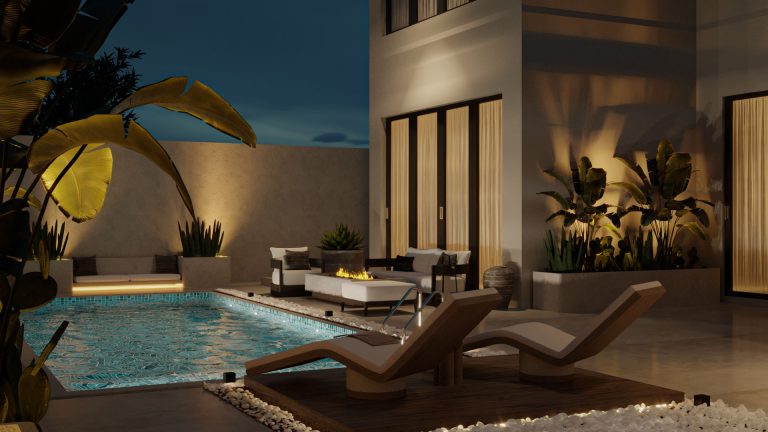Landscaping
Landscaping refers to the process of modifying and improving the features of an outdoor area, such as a garden, yard, or park, for aesthetic or practical purposes. This can include activities such as planting trees and flowers, adding or removing soil, constructing structures like paths or fences, and installing outdoor lighting and irrigation systems. Landscaping can be done for a variety of reasons, such as improving the appearance of a property, increasing property value, creating a functional outdoor living space, or enhancing the natural environment. Landscaping can be done by individuals or by professional landscapers, who may have specialized knowledge and equipment to create a specific look or achieve a particular goal

Landscaping services
Landscaping services refer to the various activities involved in creating and maintaining an attractive and functional outdoor space. These services may include:
- Landscape design: This involves planning and designing the layout of a property’s outdoor spaces, including the placement of plants, hardscaping features, and other elements.
- Planting: This involves selecting and installing plants, trees, shrubs, and other vegetation to enhance the beauty and functionality of a landscape.
- Hardscaping: This involves the installation of walkways, patios, retaining walls, and other non-plant features to enhance the usability and aesthetics of outdoor spaces.
- Irrigation: This involves the installation and maintenance of irrigation systems to ensure that plants receive the water they need to thrive.
- Lawn care: This includes mowing, fertilizing, and other activities to maintain healthy and attractive lawns.
- Tree care: This includes pruning, trimming, and other activities to maintain healthy and safe trees.
- Landscape lighting: This involves the installation of outdoor lighting to enhance the aesthetics and usability of outdoor spaces in the evening hours.
- Landscape maintenance: This includes regular upkeep activities such as weeding, mulching, and pest control to ensure that a landscape remains healthy and attractive over time.
Professional landscaping companies may offer all of these services or specialize in certain areas, depending on the needs of their clients. They may work with residential, commercial, or institutional clients to create and maintain beautiful and functional outdoor spaces.
Landscaping design
Landscaping design refers to the process of planning and arranging outdoor spaces to create an aesthetically pleasing and functional environment. This includes the selection of plants, trees, shrubs, and other vegetation, as well as hardscaping elements such as walkways, patios, and retaining walls.
Landscaping design also involves considering factors such as the site’s topography, soil type, and drainage, as well as the intended use of the space and the preferences of the property owner. A well-designed landscape can enhance the beauty and value of a property, while also providing benefits such as improved air and water quality, reduced energy costs, and increased biodiversity.
Some common elements of landscaping design include the use of color, texture, and form to create visual interest; the incorporation of native plants and other eco-friendly features to promote sustainability; and the use of outdoor lighting and other features to extend the usability of outdoor spaces into the evening hours. Professional landscapers and landscape architects can assist with the design and implementation of landscaping projects, ensuring that they meet the needs and preferences of their clients while also providing functional and environmentally beneficial spaces.
Landscaping types
There are various types of landscaping, each with its own unique features and characteristics. Here are a few examples:
- Urban landscaping: Urban landscaping refers to the design and maintenance of outdoor spaces in urban areas such as cities and towns. This type of landscaping often involves the use of limited space and may include the use of container gardens, vertical gardens, and other space-saving techniques. Urban landscaping also often incorporates hardscaping elements such as sidewalks, street trees, and seating areas.
- Desert landscaping: Desert landscaping, also known as xeriscaping, is a type of landscaping that is designed to conserve water in arid regions. This type of landscaping typically includes the use of drought-tolerant plants, rocks, and other natural elements to create an attractive and functional outdoor space.
- Natural landscaping: Natural landscaping is a type of landscaping that is designed to create a naturalistic and ecologically beneficial outdoor space. This type of landscaping typically includes the use of native plants and other natural elements to create a habitat for wildlife and promote biodiversity. Natural landscaping may also include the use of features such as rain gardens, bioswales, and other elements that help to manage stormwater runoff.
Other types of landscaping may include cottage-style landscaping, which often features informal, colorful plantings; formal landscaping, which typically incorporates symmetrical patterns and carefully manicured plants; and tropical landscaping, which features lush, exotic plants and often includes the use of water features such as pools and fountains. The type of landscaping chosen for a particular property will depend on factors such as the climate, site conditions, and the preferences of the property owner.
To place an online order, complete the form below
How useful was this post?
Click on a star to rate it!
Average rating 0 / 5. Vote count: 0
No votes so far! Be the first to rate this post.
